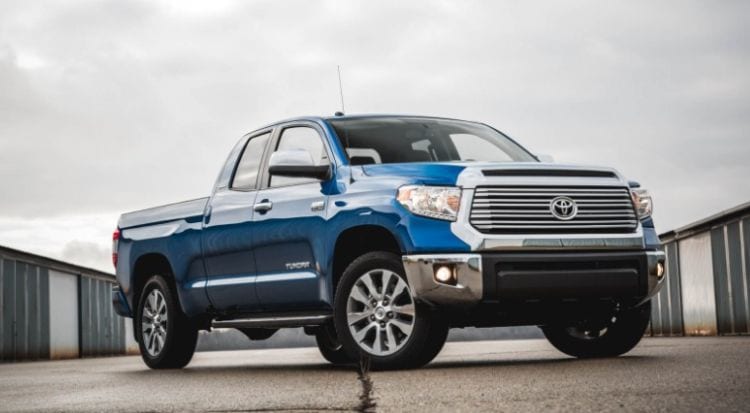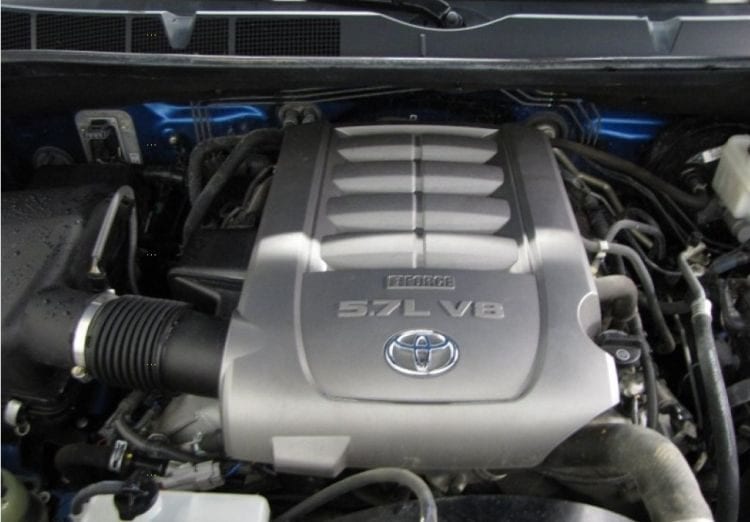Using their all-new Tundra, back at the 2007 SEMA Auto Show Toyota was showcasing a very interesting model with the Toyota Tundra Diesel, a dually-concept truck which was meant to showcase the possibility of a new diesel medium size truck. This made many people wonder about a diesel engine in one of the most advanced pickups of the moment. It made them wonder if Japanese car maker will ever release such a truck? Would they have the necessary technology even to develop such a model or would they appeal to a third party like Cummins? All of these questions still hover around to this day, nearly ten years after the release of that concept since we still did not get the diesel version of their pickup.
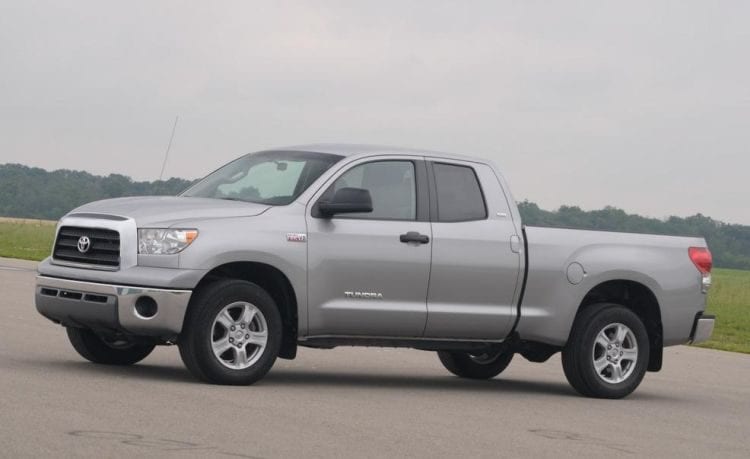
What is the Tundra?
In short, one of the best medium-sized trucks on the US market. Luckily though there is also a longer answer which we are now going to explore. The truck has its roots all the way back in the late ‘90s when Toyota was releasing the Tundra as a half-a-ton truck to compete with the F-150. Because Toyota didn’t have the technology to build such a truck, they took some of the design and solutions from the smaller Tacoma and further experimented with it. The first generation of the truck was quite good, a lot better in terms of comfort than its competitors as well as vastly different as well. It had a great start, but what happened later?
Unfortunately, because it was plagued by a few issues not that many people bought it or those who bought it didn’t actually recommend it to other people. Luckily, though, back in 2007 the all new generation of the Tundra was released. This had very little in common with its predecessor, so it used new or improved engines in the lineup, an entirely new chassis as well as it featured plenty of other new technologies and upgrades.
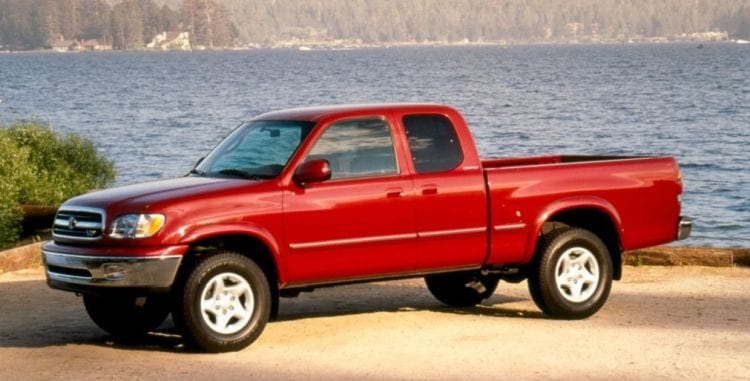
While the first generation of the Tundra came with a 3.4-liter V6 unit and an assortment of other low-powered engines, the new truck came with a set of new V8s, starting with a rather old 4.7-liter unit and ending up with a 5.7-liter V8 which still is among the most reliable and powerful naturally aspirated engines on the truck market. A six-speed automatic gearbox has been offered almost immediately since its launch, and it still is being provided to this day.
The Tundra also won the prize for the “Half-ton truck of the year” back in 2000 and more recently in 2008. This is mainly because it is different and quite a bit more interesting than its competitors. While some may not agree, the Tundra has been called on numerous occasions as the king of the half a ton trucks. This is partially true, but it wasn’t always like that.
The first generation of the truck did not sell as great as Toyota hoped. In fact, they were thinking of discontinuing the model but luckily they decided to carry on. The restyled and redesigned version which was showcased back in 2007 is a vastly different story. Many American buyers took notice of the Tundra, and many started to like the way it has been built and what it featured inside the cabin. This made the Tundra the first truck to challenge the big “Detroit-Three” trucks.
These are being represented by Ford, GM and more recently the FCA Group. These three combined account for more than 80% of the total truck market in North America which is an impressive figure. However, the relatively new Tundra managed to account for around 5 to 8% which is quite impressive considering that Toyota’s total sales account for roughly 13% now.
Even from the first generation, Toyota spent a lot of time developing the Tundra as a true American truck. It is very different than the smaller Tacoma and quite a bit more different than its competitors. The design has been developed specifically to make the Tundra seem like an American-made truck and Toyota’s decision to build the factory in Texas was planned quite ahead of its official debut. One of the reasons many people still prefer to buy the Tundra instead of the other great trucks out there is the fact that the Tundra currently holds the title for the pickup with the most American-made components on the market.
This is quite unusual, especially since Toyota is a Japanese company, but it seems that they worked quite a bit on making the Tundra the truck workhorse many people needed while not shaving from its quality components. In order to commemorate the opening of the ranch the factory has been built on, Toyota also released a special edition Tundra with the “1794” which is the year when the ranch has been opened. Many good marketing tricks were used for Toyota’s truck, and this certainly brought it even closer to potential buyers.
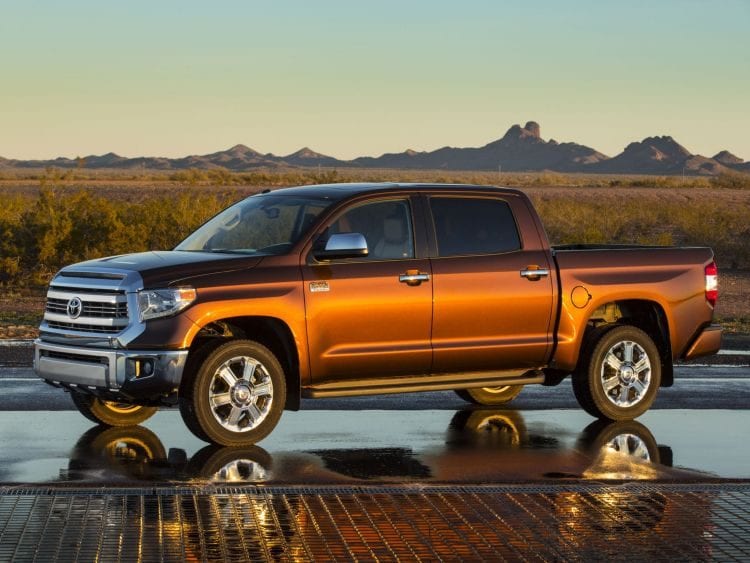
The Toyota Tundra – one of the most impressively built trucks out there.
Because redesigned Toyota learned quite a bit from the original version of the Tundra, the one released back in 2007 was a completely different beast. In fact, in order to make the truck as reliable and as dependable as possible they decided that it would be best to install oversized parts. This practice has been used in the past as well but more recently manufacturers adopted a completely different strategy. The fact that Toyota is willing to offer the truck at a higher price premium or even earn less money on each sold pickup it makes us think that Toyota is really caring for their customers.
The current model of the Tundra features, and it is the case since it was launched, a massive 10.5-inch rear differential gear which usually has a gear ratio of 4.30:1. For those not knowing what this means, the medium sized Tundra features a very similar rear differential to that on the F-350 dually or the Ram 3500 dually, two of the most powerful and most capable trucks on the market. This rear differential allows the current Tundra to tow more than 10,000 pounds while most other trucks in its class can barely touch 9,000 pounds.
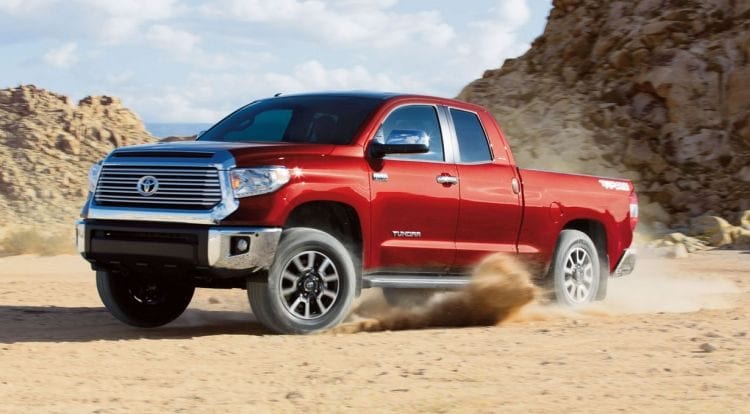
Thanks to its gear ratios of 4.30:1 it means that the Tundra has been set up not for speed but for towing power and acceleration which is very important when you decide to put bigger tires on the truck. In fact, the Tundra still is one of the only trucks out there which allows the installation of 31 or 33-inch high-performance off-road tires without any modifications. This is possible thanks to its massive suspension travel, which ranges from 10 to 14 inches depending on the model of choice, and its highly capable engines. The Tundra also gets one of the largest ground clearances on the market which is also highly appreciated for a truck that is usually used on unpaved roads and off-road job sites.
All of these mean that the current generation of the Tundra is one of the most capable off-road trucks as well as one of the better suited for modifications. Toyota is offering, through their TRD program, an improved suspension system with an even longer wheel travel and adjustable shocks. Furthermore, it also brings engine mods aimed at increasing the power of the stock 5.7-liter V8 as well as plenty of other neat features such as exterior and interior upgrades and even off-road accessories.
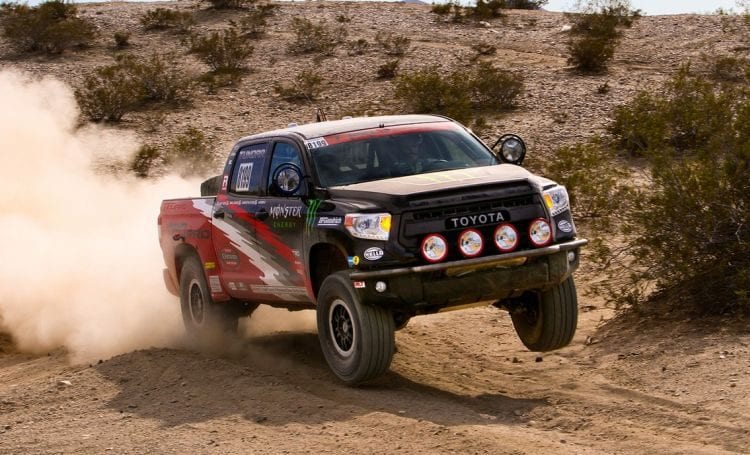
Are diesel trucks that great?
For those who never drove a diesel pick-up truck, the idea of diesel seems rather strange. However, many people know that the diesel engine is much more suitable for heavy work. This is because the modern diesel engines are turbocharged and all of them are capable of delivering most of the torque from really low down the rev range. This means that the engine is better suited for towing stuff around, and it is also quite a bit better for a working truck. Why? Well, the answer is simple. Diesel is quite a bit more thermally efficient than a petrol engine which means it uses less fuel. A lot less fuel. In fact, diesel can be with up to 50% more efficient than a gasoline engine in certain scenarios which makes it perfect for use in truck fleets.
Currently, the big three manufacturers are all offering diesel engines for their customers. Ford has the Power Stroke unit which is available on the F-250 and other heavy duty trucks. This means that a base diesel usually starts at well above $40,000 on a rather bare-bones truck. Ram is also offering a large Cummins inline six on their Ram 2500 and up but because they wanted to give all of their customers a choice, the Ram 1500 can also be had with a 3.0-liter turbocharged V6 EcoDiesel which currently accounts for more than 20% of all the Ram’s sales of 1500 trucks. GM is only offering a large Duramax V8 on their quarter ton and ton truck which is the same as Ford.
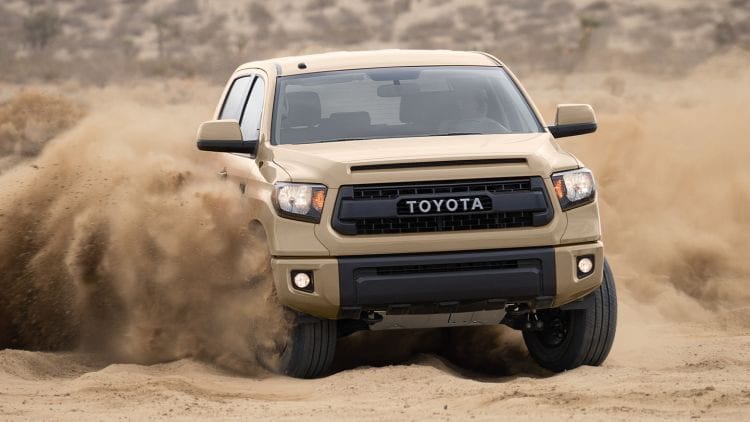
When the Tundra diesel is released, likely its only competitor is going to be the EcoDiesel on the Ram 1500. With the help of an eight-speed automatic, this is by far the most interesting, and most efficient, medium size truck out there. It is highly capable being able to tow more than 9,000 pounds and on top of that it will also save you a lot of money on the fuel bill.
There are few other diesel trucks out there as well. More recently manufacturers realized that the US market needs diesel pickups. Not that long ago Nissan was showcasing a Frontier concept with a diesel and GM even released a diesel for their Colorado and Canyon. On top of that, Nissan has launched the Titan xD version, the second diesel medium size truck on the US market and the first true new competitor for the future Tundra. In the upcoming years, many other manufacturers are also expected to release new diesel trucks for the segment. Ford, with their F-150, is supposed to introduce a new 3.0-liter twin-turbocharged diesel while GM has been thinking about a Duramax-powered Silverado.

Toyota’s Worldwide diesel trucks.
Not many people know, in the US, that Toyota has been offering diesel engines on trucks for decades. Ever since the early 1970s and ‘80s, trucks like the Hilux have been available with naturally aspirated or turbocharged diesel engines ranging from 2.4 to 3.0-liters in displacements and with outputs from as low as 40 horsepower all the way up to more than 170 horsepower. The Hilux is likely the best-known truck ever made and that’s for a very good reason. It is, by far, the most reliable vehicle on the market (at least in this segment) as well as one of the cheapest. While it has been present on the US market for some time, the Hilux was later replaced by the Tacoma which shares its chassis.
However, unlike the Tacoma which is available only with petrol engines, because the Hilux is more of a worldwide release, it has to meet the demands of many different markets. This means that it can be had with quite a few petrol engines but also with four diesel engines. The older generation diesel’s such as the old 2.5 or 3.0-liter units are usually offered in markets where fuel efficiency or even emissions are not as important. These are still highly capable delivering more than 160 horsepower in some cases with the only real drawback being the higher emissions.
For most other markets, though, Toyota has been offering a new generation of diesel engines such as their new 2.4 and 2.8-liter units. Both of these have been developed from scratch recently, and both are usually more capable than the larger and older units. The only drawback here is the considerably higher sticker price with the benefits of being more efficient and quite a bit friendlier to the environment as well.
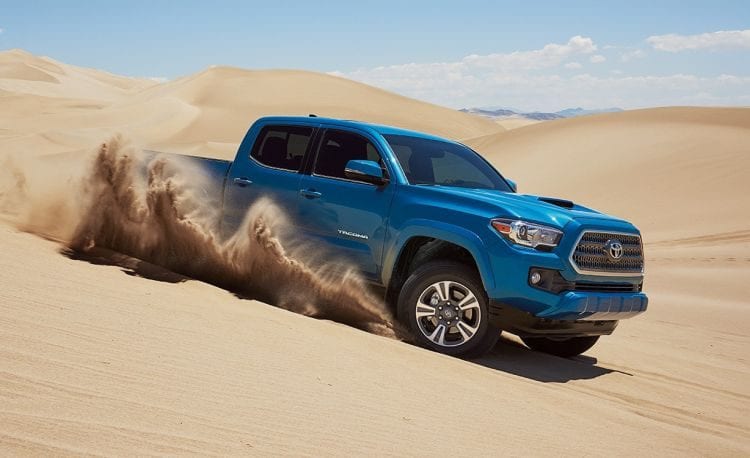
In the US there are very few people that know Toyota’s Hino brand. If you didn’t know, Hino has been a truck manufacturer which was later acquired by Toyota for their expertise with diesel engines. Even in the US where Hino has been selling vehicles, the Toyota brand is rarely associated with them.
Thanks to their expertise with diesel engines, Hino is the main company that develops and uses this type of engines. However, in the Hilux for example, the diesel is being built by Toyota, but it was developed in cooperation with Hino. Not that long ago they started working on a new type of hybrid powertrain using a diesel engine as the prime mover. This has also been used on locomotives or certain large dump trucks but never on a regular truck. However, the engine is so efficient and reliable that Hino has been offering lease trucks to companies in order to test them, and it seems that so far not that many failed.
The diesel engine is usually quite weak at very low rpm and higher rpm as well. The electric motor integrated by Hino into the transmission is there to reduce lag and give the diesel some oomph when it needs it. A large battery pack has also been added to store regenerative energy and also to allow the small boost in power. The only drawback here is that a system like this wouldn’t have space on a small truck, but Hino might develop a more compact version which would easily allow Toyota to win in this segment.
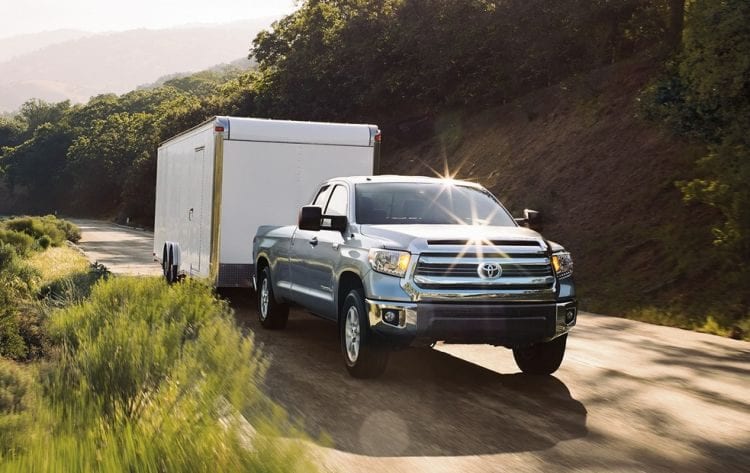
Now, let’s move to the Tundra Diesel which is likely one of the most awaited trucks on the US market and the only reason why it hasn’t been released so far is that Toyota said that such a truck just wouldn’t sell because it would be more expensive than a petrol engine powered model. Luckily though it seems that Toyota realized that people would happily pay extra for a diesel truck to benefit from the extra torque, better fuel efficiency, and much more powerful engine. The diesel Tundra is expected to either use a Hino-developed powertrain or a Cummins engine.
If Hino develops a new engine for the Tundra, our best bet would say that they will go for a six cylinder 3 to 5.0-liter turbocharged diesel unit helped by a small electric motor and a medium size battery pack. This would allow for towing ratings close to 15,000 pounds while having the benefit of being quite compact. A 5.0-liter turbocharged V8 by Cummins is also a real possibility. This would be less powerful and not as efficient because it would be just a diesel. However, the Cummins could be more reliable, easier to repair in a pinch as well as likely much cheaper than the Hino-based hybrid powertrain. Another benefit of using Cummins unit could be the brand name that is far more known than any other that could come as an option.

